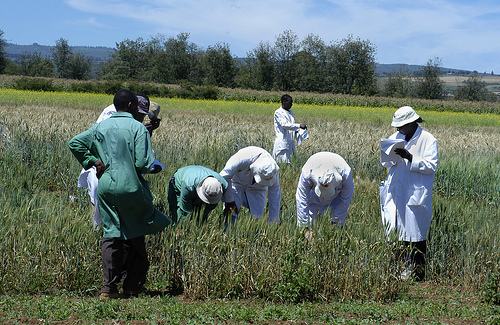Wheat Genome Sequenced in Breakthrough for Global Food Security

Researchers in Njoro, Kenya, evaluating wheat for resistance to Ug99 in October 2005.
The Journal Nature today published a paper reporting that scientists from USDA’s Agricultural Research Service (ARS), as part of an international team, have completed a shotgun sequencing of the wheat genome. The achievement is expected to increase wheat yields, help feed the world and speed up development of wheat varieties with enhanced nutritional value. Wheat is one of the world’s “big three” crops, along with rice and corn, upon which the world’s growing population depends for nutrition.
Sequencing the genome of wheat was unusually daunting because the wheat genome is five times the size of the human genome, and has 94,000 to 96,000 genes. This sequencing effort involved the identification of essentially all of those genes and mapping their relationship to other genes. Previously, the size and complexity of the wheat genome had been significant barriers to performing a complete analysis, but the scientists overcame that problem by developing a new strategy that compared wheat genetic sequences to known grass genes, such as from rice and barley. Read more »

